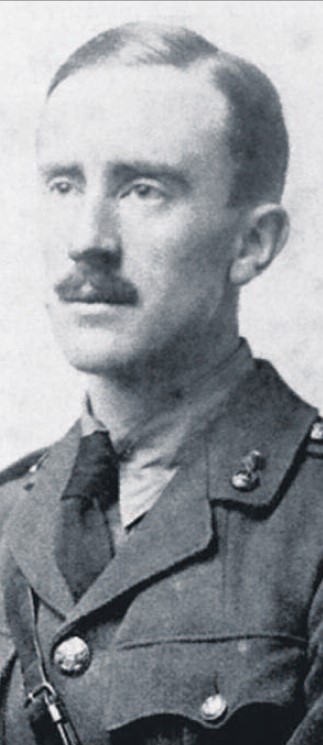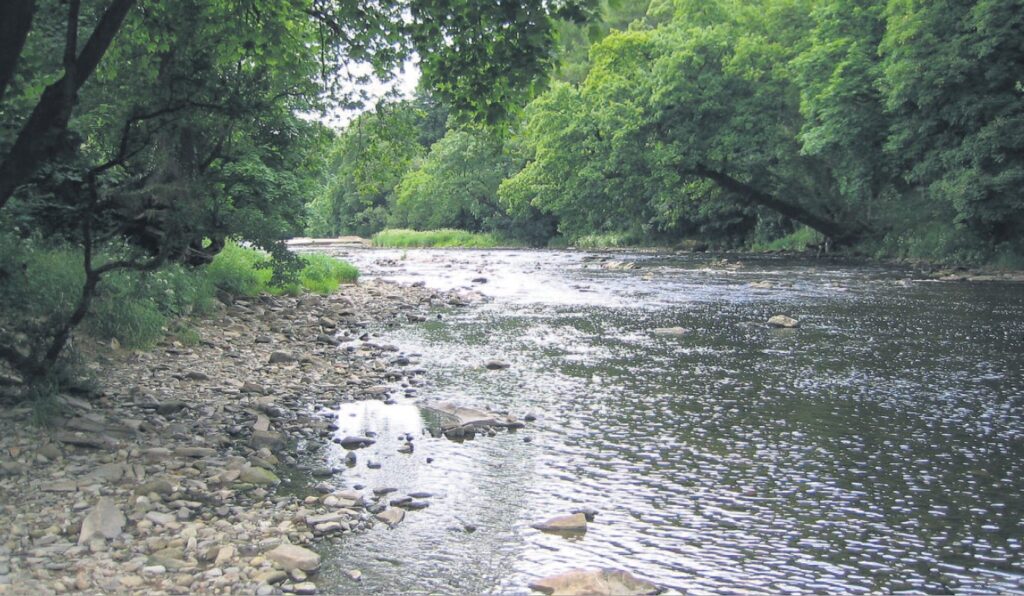Friday 3rd May 2019
The CHC @ The Catholic Universe
Easter notes: How his Catholic faith fired Tolkien’s imagination
Stefan Kaminski
Stonyhurst College and its surroundings have a long connection with J.R.R. Tolkien. As a father of four, Tolkien often visited two of his sons at Stonyhurst. Whilst John was based at St Mary’s House as a student for the priesthood during the Second World War, his father spent many an afternoon in the College working on the script of The Lord of the Rings. Tolkien would later return to the school in the ‘60s and ‘70s to visit Michael, who taught classics. The Tolkien Trail, with the Stonyhurst estate at its heart, capitalises on this likely source of real-life inspiration for Middle-Earth and directs the mildly-intrepid explorer from the Shireburn Arms, along Shire Lane, past a now disused ferry crossing and on through other evocative locations.
Whether or not Tolkien had precisely these locations in mind when he penned his saga, the attentive reader cannot fail to see echoes of Middle-Earth in this landscape. From the homely habitations of the Ribble Valley to the brooding presence of Pendle Hill behind thick forest, one can easily find oneself accompanying Bilbo or Frodo along the earlier stages of their journeys in one’s imagination. And with springtime in the air, the unusually marvellous weather is making the Ribble Valley positively sing with the busyness of its fauna and the blossoming of its flora. New life emerges everywhere in its innocence and vibrancy.
The springtime beauty of God’s creation, so eloquently described by Tolkien and so fundamental a theme in the history of Middle-Earth, is of particular poignancy to the Christian at Easter time. The visible signs of life and growth should be a reflection of those occurring in the depths of our souls, after our Lenten preparation. The highlight of the liturgical year – the triumph of life over death and the conquering of sin – constitutes a rallying cry for each individual to new life in Jesus Christ. Easter is the springtime of our souls.
The fact that the Resurrection does indeed involve a personal dimension and not just a cosmic one, is beautifully reflected in Tolkien’s work. Although the LotR saga is undoubtedly attractive for its themes and for the sheer scale of the work, the minds and hearts of readers are drawn into this epic through a very ordinary protagonist with very ordinary worries and struggles. Frodo the hobbit is caught up in matters far greater than himself, yet within the drama of the cosmic struggle is woven his personal contribution with its own strife

Although Tolkien was clear that The Lord of the Rings was a profoundly religious work, one that built on and explored his Catholic faith, he did not wish for it to be explicitly Christian. The tale is therefore pre-Christian in the sense that it does not directly encapsulate the concept of God’s final revelation and redemption in His Son. Nonetheless, one can find allusions to the Christ throughout the narrative. One of the clearest such references is the figure of Gandalf the Grey. His duel with the Balrog at the gates of Moria sees him fall “beyond light and knowledge… far under the living earth, where time is not counted.” There, he battles until this fearful enemy is defeated, after which Gandalf returns to the hobbit and co. as a new-and-yet-not-new Gandalf, the White.
Through the figure of Gandalf, we are taught some important lessons about the Paschal mystery. It is Gandalf who is the catalyst for both Bilbo and Frodo setting out on their respective journeys: his is the ‘voice’ that summons them to adventure and to great deeds. For those not familiar with the habits of hobbits, it should be remembered that these are a very homely and comfortable race, that do not like to stray far from their next meal or cup of tea. In this sense, Bilbo and Frodo’s journeys involve a certain detachment and stepping outside of their comfort zones. This is the process by which they are transformed, a hint of the “new creation” which the grace of Christ enables (2 Cor 5:17). “My dear Bilbo!” exclaims Gandalf, “Something is the matter with you! You are not the hobbit that you were.” This is what the process of purification, including the age-long discipline of fasting, is for: to exorcise our worldly attachments in order to free the soul for a renewed growth.

Lastly, and perhaps most powerfully of all, the final victory over the power of darkness reveals the operation of a certain Providence in and through the freely willed actions of individuals. It is not a providence that overrides minds and hearts; indeed, despite Frodo’s magnificent efforts, he fails at the very end of his mission insofar as he tries to claim the Ring for himself rather than destroy it. Yet the mission is brought to completion by the continued greed of Gollum, who in a final grasp for the Ring sends both it and himself to their fiery doom. In this way, Tolkien expresses a firm sense of the Divine Omniscience who works in and through each of His beloved creatures, allowing us to respond (or otherwise) to His grace; and regardless, always bringing about a greater good from every situation. So Gandalf tells Bilbo: “Surely you don’t disbelieve the prophecies, because you had a hand in bringing them about yourself? You don’t really suppose, do you, that all your adventures and escapes were managed by mere luck, just for your sole benefit?”
Easter is a time not just to celebrate, but to consider our own response to God’s grace. Confidence in His mercy should all the more encourage our own striving for that which might otherwise seem too much of an ‘ask’. And if we are short of a good read, Tolkien provides both inspiration and much to ponder with a solidly Christian flavour.
Stefan Kaminski is the Director of The Christian Heritage Centre
